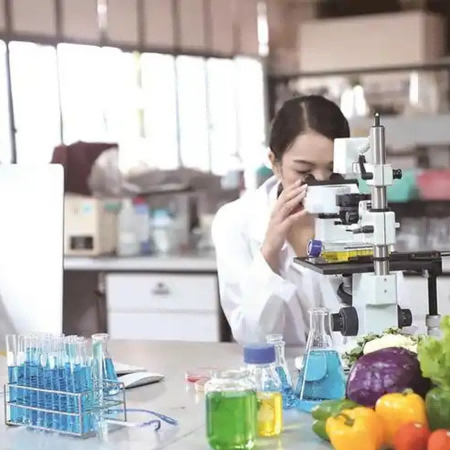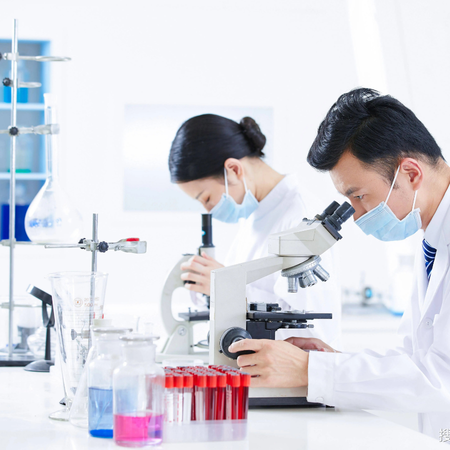Reliable Filtration Tools for Modern Laboratory Demands
Efficient and safe liquid filtration is essential in a wide range of laboratory environments, from academic research to pharmaceutical development and clinical testing. To meet stringent sterility requirements and high-throughput demands, laboratories must rely on tools that offer speed, accuracy, and convenience. Among these tools, the bottle top filter has emerged as one of the most reliable and effective solutions for sterile and particulate-free sample preparation.
A bottle top filter simplifies the filtration process by allowing direct filtration into receiving bottles using vacuum or gravity. It eliminates the need for bulky filtration assemblies, minimizes contamination risk, and ensures that filtration steps are performed with consistent speed and efficiency. Whether you're preparing media, buffers, or chemical reagents, choosing the right bottle top filter ensures that your results remain reproducible, clean, and safe.
Enhancing Laboratory Efficiency with Bottle Top Filters
Streamlined Workflow for Routine Filtration
In laboratories where time is of the essence, the bottle top filter offers a straightforward and time-saving solution. Its plug-and-play design allows users to attach it directly to a standard GL45 lab bottle, eliminating the need for complex vacuum setups or additional glassware.
This streamlined approach significantly reduces filtration time, especially in workflows involving multiple samples or large volumes. Laboratories can maintain high throughput without sacrificing accuracy or sterility, making the bottle top filter an indispensable asset for both routine and critical filtration tasks.
Reduced Contamination Risk
Contamination is one of the most significant threats to experimental integrity. Using a bottle top filter drastically reduces the risk of cross-contamination thanks to its closed, pre-sterilized design. Each unit is typically individually packaged and ready to use, minimizing handling and exposure.
Since no tubing or adapters are required, the system remains closed and clean during the entire process. This helps protect sensitive reagents, culture media, and analytical samples from airborne particles or microbial intrusion.
Supporting High-Quality Results Across Applications
Optimal Sterility for Cell Culture and Microbiology
For applications involving living cells or microbial cultures, sterility is not negotiable. Bottle top filters equipped with 0.22 μm pore size membranes are ideal for removing bacteria and maintaining sterility in solutions. They are commonly used in media preparation, antibiotic solutions, and buffer sterilization.
Thanks to their consistent pore size and robust membrane material, bottle top filters offer high flow rates while ensuring that no microbial contaminants pass through. This makes them perfect for maintaining the integrity of long-term experiments and ensuring reproducibility.
Clarification of Chemical and Analytical Solutions
In analytical chemistry and chemical preparation, removing particulates is essential to prevent column blockages, instrumentation wear, and interference in analysis. Bottle top filters with 0.45 μm membranes are effective for clarifying samples without over-filtering.
By ensuring a clean, particle-free solution, these filters contribute to sharper chromatographic peaks and more accurate analytical data. The consistent filtration process supports precise dosing and reliable results across a wide range of techniques such as HPLC, GC, or spectroscopy.

Understanding Filter Membrane Options
Choosing the Right Membrane Material
The performance of a bottle top filter is largely dependent on its membrane material. Common options include polyethersulfone (PES), cellulose acetate (CA), nylon, and PTFE. Each membrane has unique compatibility features with different types of solvents, samples, and experimental conditions.
PES is widely used for aqueous and cell culture applications due to its low protein binding and high flow rates. Nylon is chemically resistant and ideal for use with alcohols and general lab solutions. PTFE membranes are suited for harsh solvents or gases, making them versatile across advanced chemistry settings.
Low Binding for Maximum Sample Recovery
In applications where analyte loss must be minimized, such as protein purification or enzyme filtration, using low-protein binding membranes is essential. Bottle top filters made with PES or CA membranes ensure that target molecules remain in solution rather than being absorbed into the membrane.
This feature is particularly important in pharmaceutical research and diagnostic laboratories, where sample loss can lead to inaccurate results or wasted reagents. Selecting a bottle top filter with low-binding characteristics helps maximize yield and efficiency.
Performance Factors That Influence Filtration
Pore Size Selection for Precision Filtration
The choice of pore size affects not only what contaminants are removed but also how quickly filtration can be completed. For sterile filtration, 0.22 μm membranes are ideal, as they effectively remove bacteria and particulates. For general clarification, 0.45 μm membranes offer faster flow without compromising performance.
Larger pore sizes are beneficial when the focus is on speed rather than sterility, especially when processing large volumes of non-biological samples. Proper pore size selection helps maintain a balance between flow rate and filtration quality.
Filtration Volume and Throughput
Bottle top filters are available in various volume capacities, ranging from 150 mL to 1000 mL or more. Choosing the right size for your workflow ensures efficient processing and reduces the need for repeated refilling.
High-volume bottle top filters are designed with larger surface areas and wider membranes, enabling faster processing of larger batches. For high-throughput laboratories, using large-capacity bottle top filters ensures consistency and minimizes workflow interruptions.
Practical Considerations for Filter Selection
Bottle Compatibility and Secure Fit
Not all bottle top filters fit all lab bottles. Most are designed to work with GL45-threaded bottles, but it is important to verify compatibility before use. An improperly fitted filter can lead to leaks, vacuum loss, or contamination.
Some bottle top filters come with adapters to accommodate different thread types or bottle designs. Ensuring a snug and secure fit supports filtration integrity and prevents mishaps during operation.
Pre-Sterilization and Packaging
To meet the requirements of regulated environments, many bottle top filters are supplied pre-sterilized. This saves time in preparation and ensures compliance with sterility protocols. Manufacturers typically use gamma irradiation or electron beam sterilization methods to maintain the filter’s sterile status until use.
Single-use sterile packaging also helps reduce waste and prevent contamination during handling. Always check for sterility assurance levels and lot traceability if working in GMP or GLP environments.
Sustainability and Safety Benefits
Reducing Chemical Waste and Solvent Use
Using a bottle top filter can significantly reduce solvent usage and chemical waste in the lab. Compared to traditional filtration setups, the design allows for faster and more targeted filtration, which often eliminates the need for repeated washing or post-filtration steps.
This efficiency contributes to greener lab practices, supporting sustainability goals and reducing operational costs associated with solvent disposal and chemical handling.
Promoting Safer Laboratory Environments
With fewer open systems and reduced handling, bottle top filters contribute to a safer working environment. Their enclosed design limits operator exposure to hazardous materials, splashes, or spills during filtration.
By minimizing risk factors and simplifying workflow, bottle top filters help promote adherence to laboratory safety standards while enhancing staff productivity and confidence.
Adapting to Advanced Lab Requirements
Integration into Automation and High-Throughput Systems
In high-throughput environments, where labs process hundreds of samples daily, automation is a key advantage. Bottle top filters can be integrated into vacuum manifolds or used with robotic systems when uniform design and predictable performance are essential.
These filters support scalable workflows without compromising sterility or accuracy. They are especially useful in pharmaceutical development, diagnostics, and quality control settings where consistency is critical.
Customization for Specialized Applications
Some bottle top filters are available with additional features such as vented caps, graduated reservoirs, or hydrophilic/hydrophobic membranes for specialized needs. These features support workflows involving organic solvents, air-sensitive compounds, or sample drying processes.
Custom-configured bottle top filters ensure that niche applications—from viral filtration to nanoparticle isolation—can be carried out with the same confidence as general-purpose filtration tasks.
FAQ
What is the main purpose of a bottle top filter?
A bottle top filter is used to sterilize or clarify liquid samples in the lab by filtering them directly into a receiving bottle. It simplifies the filtration process and helps ensure sterility, speed, and reproducibility across various applications.
How do I choose the best bottle top filter for my needs?
Select a bottle top filter based on your sample type, required pore size, membrane compatibility, and volume capacity. Ensure that the filter fits your lab bottle securely and meets the sterility requirements of your application.
Can bottle top filters be reused?
Most bottle top filters are designed for single use to guarantee sterility and filtration performance. Reuse is not recommended, especially in critical applications, as it can lead to contamination and inconsistent results.
Are bottle top filters safe for filtering solvents?
Yes, but you must choose a bottle top filter with a chemically resistant membrane such as PTFE or nylon. Always verify solvent compatibility to ensure the membrane will not degrade or compromise sample quality.
Table of Contents
- Reliable Filtration Tools for Modern Laboratory Demands
- Enhancing Laboratory Efficiency with Bottle Top Filters
- Supporting High-Quality Results Across Applications
- Understanding Filter Membrane Options
- Performance Factors That Influence Filtration
- Practical Considerations for Filter Selection
- Sustainability and Safety Benefits
- Adapting to Advanced Lab Requirements
- FAQ




